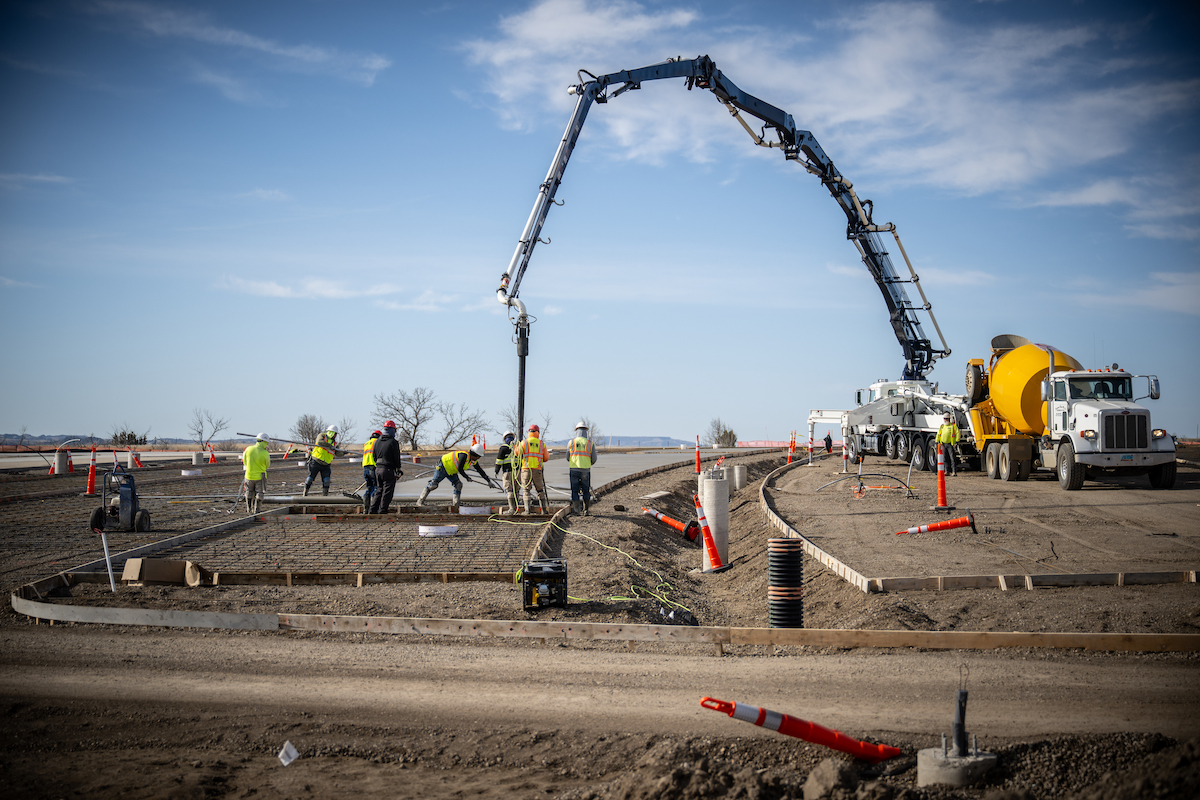In today’s competitive market, methods that rely on manual labor are unsustainable – in terms of worker safety, productivity and overall cost-effectiveness. Instead, successful contractors are supplementing experienced crews with machines that increase efficiency in a number of areas. This mechanization has allowed the industry to continue to thrive and meet challenges, such as safety concerns, environmental issues, and shrinking workforces, head on.
Within demolition, remote-controlled machines provide an innovative mechanical solution, enabling contractors to continue moving forward despite ever-changing industry conditions. These machines also pave the way for new opportunities in industries such as processing, concrete cutting, mining, and tunneling. Here’s how:
Thanks to advanced technology and an industry-leading power to weight ratio, these compact machines can access some of the most restrictive jobsites – including those with dust, vibration, and noise restrictions as well as low floor loads. At 31 inches wide and weighing 1,235 pounds, the most compact units are small enough to fit through standard doorways and light enough to be transported on passenger elevators, making them ideal for confined spaces and interior demolition projects. A number of larger models – up to 26,000 pounds – are available for projects where power is more important than footprint. Regardless of size, these demolition robots provide an impressive hitting power, on par with excavators three times their size.
This allows contractors to greatly increase efficiency by employing heavy-hitting machines in applications previously limited to large crews with handheld equipment. For example, one contractor cut the demolition crew by a third on a recent interior demolition with two 2,183-pound remote-controlled demolition machines. The robots, each with a single operator, were able to access floors where even skid steers were deemed too heavy during the nearly 1 million-square-foot, multi-level tear out. With minimal labor requirements, the contractor could better utilize employees across simultaneous jobsites while increasing productivity and lowering overall labor costs.

| Your local Komatsu America Corp dealer |
|---|
| Road Machinery and Supplies Company |
In addition to replacing large crews with handheld equipment, remote-controlled demolition machines with the right attachments can also do the job of several common compact machines – including skid steers and mini excavators – allowing contractors to increase productivity without expanding their fleet. Innovative manufacturers offer a number of attachments, such as rock drills, buckets, scarifiers, planers, concrete crushers, drum cutters, metal shears, grapples and many more, to help contractors streamline jobsite logistics and increase efficiency across the board.
The benefits of increased productivity and versatility from remote-controlled demolition machines translate to more jobs, less overhead and a bidding advantage for contractors in a number of applications, including concrete cutting.
For example, removing an elevated floor using traditional concrete cutting methods starts with adequate shoring, for safety, followed by sawing the floor into workable pieces before removal and crushing in another location. Instead, one contractor was able to revolutionize his process with remote-controlled demolition machines. Taking advantage of the lightweight robot’s compact size and a crusher attachment, crews were able to break the floor into small enough pieces to safely drop onto the ground below. This process eliminated the need for shoring and allowed crews to complete the work twice as fast. It also reduced labor and parts costs, enabling the company to cut overall project costs by two thirds, which, in turn, provided a significant bidding advantage in a competitive market.
Social distancing and other preventative measures to stem the spread of COVID-19 are currently at the front of contractor’ safety concerns. For companies using remote-controlled demolition machines, the reduced crew requirements make it easier to follow recommended safety guidelines. However, there are also a number of long-standing safety and health risks remote technology can help alleviate.
With an operating distance of up to 984 feet, remote-controlled units physically distance employees from harmful silica dust, as well as the strong vibrations of handheld equipment such as breakers, rivet busters, and chipping guns. Long-term use of these common demolition tools is linked to a number of chronic injuries, including carpel tunnel syndrome, nerve damage, and hand-arm vibration syndrome. These health concerns affect a large number of construction and demolition workers, which is reflected in workman’s comp claims and insurance premiums for employers.

| Your local Link Belt dealer |
|---|
| Hayden-Murphy Equipment Co |
Additionally, remote-controlled demolition machines help prevent one of the most common causes of serious work-related injury and death in construction – falls. Recent U.S. Bureau of Labor Statistics data identified 338 fatal falls to the lower level among 1,038 total construction fatalities for the year. That same year falls on the same level or to lower levels amounted to $17.1 billion – 29.2 percent – of the nearly $60 billion spent by employers on serious, non-fatal workplace injuries. A remote-controlled unit allows operators to remain a safe distance from ledges and other fall hazards. This provides peace of mind for workers and project managers, but also increases productivity by minimizing the need for erecting fall protections.
Another common jobsite safety risk where remote-controlled machines can offer relief is mounting and dismounting equipment. While the cab of an excavator or other compact equipment protects operators from dust and flying or falling debris, climbing into or out of these machines is a leading cause of jobsite injury for these employees, resulting in sprains, strains, and other minor ailments. Remote-control demolition machines eliminate this risk by allowing operators to remain safely on the ground and outside the immediate work zone.
Innovative machines with an advanced three-part arm and 360-degree rotation further reduce soft tissue and repetitive motion injuries by allowing operators to perform a range of tasks at nearly any angle without fatiguing or straining muscles. An ergonomic, lightweight control box conveniently attached at the waist also helps.
For contractors using remote-controlled machines, these safety benefits can quickly add up to significant savings on workman’s comp and insurance premiums. Remote operation paired with smaller crew size can significantly lower worker liability costs by limiting personnel in confined spaces or hazardous operations.
One concrete cutting contractor who made the switch to demolition robots nearly two decades ago has seen a decrease in annual compensation claims by about 50 percent, thanks in part to the reduced physical strain provided by these machines. The company has also seen a 25 percent decrease, or about $40,000 to $50,000 savings, in injury costs per year. Another concrete cutting operation reduced its experience modification rate, or EMR, along with workman’s comp claims with the addition of remote-controlled demolition machines. Insurance companies calculate EMR based on a company’s safety record and using it to gauge future chances of risk. Higher EMRs result in higher insurance premiums.

| Your local Trimble Construction Division dealer |
|---|
| SITECH Northwest |
In today’s competitive job market, finding and retaining skilled workers has become a major challenge for construction and demolition operations. At the heart of the labor shortage are two key factors – an aging group of current employees and fewer young workers interested in entering skilled trades. However, despite these shortages, the demand for demolition continues to grow, leaving contractors with a perfect storm of plentiful work but not enough hands to carry it out.
Here again, mechanization offers an innovative solution. In addition to safety and comfort features that allow existing employees to remain on the job for longer, cutting-edge robotic technology is attractive to younger workers. For one concrete cutting company, including advanced robotic technology in their fleet helped reduce the median age of their 300-strong workforce to just 25 years old and cut turnover 10 percent. The machines also allowed the contractor to do more work with fewer people, increasing productivity 17 percent over three years.
There’s no way to accurately predict what tomorrow’s jobsite will look like, but, for successful contractors, factors such as productivity, safety and profitability remain evergreen. Mechanization allows these companies to quickly adapt to changes in labor, process or regulation, keeping them ahead of the curve – and the competition.








































































